Setting up a schedule in a self contained classroom is one of the hardest parts of the job. It’s like putting together a puzzle with 2,000 pieces, but there is always a missing piece. You constantly have to go back to the drawing board and try to find something that works best. Sometimes I wish there was a magic scheduling wand I could just wave and have it done for me. Over the years, I have learned a few tips and tricks that have made the process as smooth as it can be. I have compiled those tips for creating a special education schedule for you below!
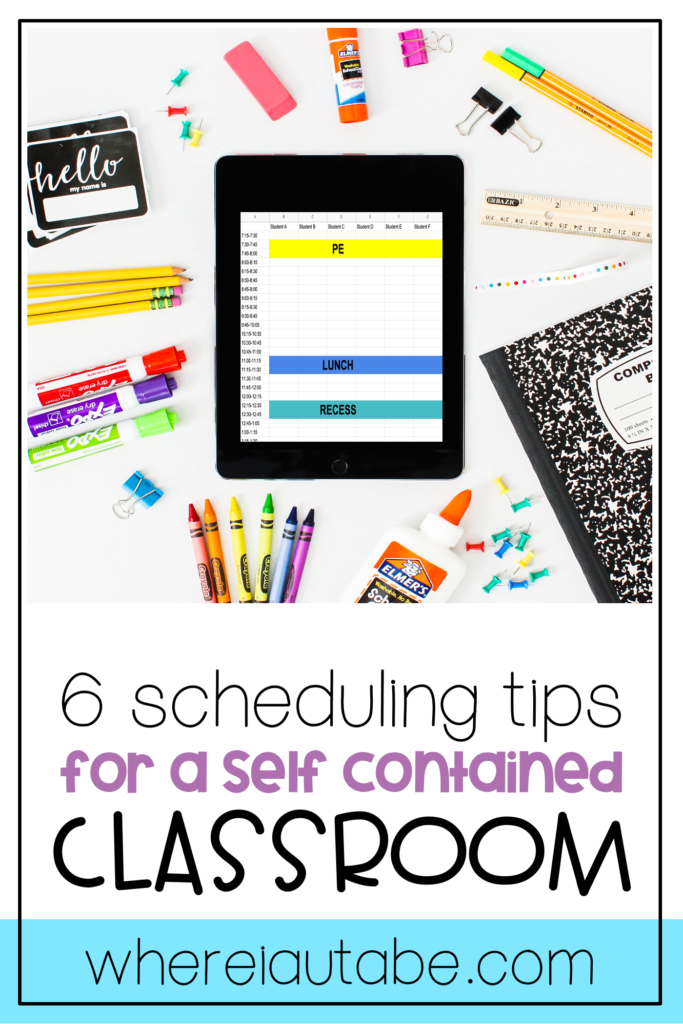
Set Up Your Schedule in 15 Minute Increments
If you teach a self-contained class, chances are that you teach multiple grade levels. Multiple grade levels also means you have to work with each grade level’s schedule. See how this is already a headache? I totally feel you! This is why before I even start plugging anything in, I divide my schedule template in 15 minute blocks. It’s important to do this because you want to make sure all your legal minutes are accounted for. There are so many varying start times in each grade level, that I find it easiest to read and work with the schedule by 15 minutes at a time.
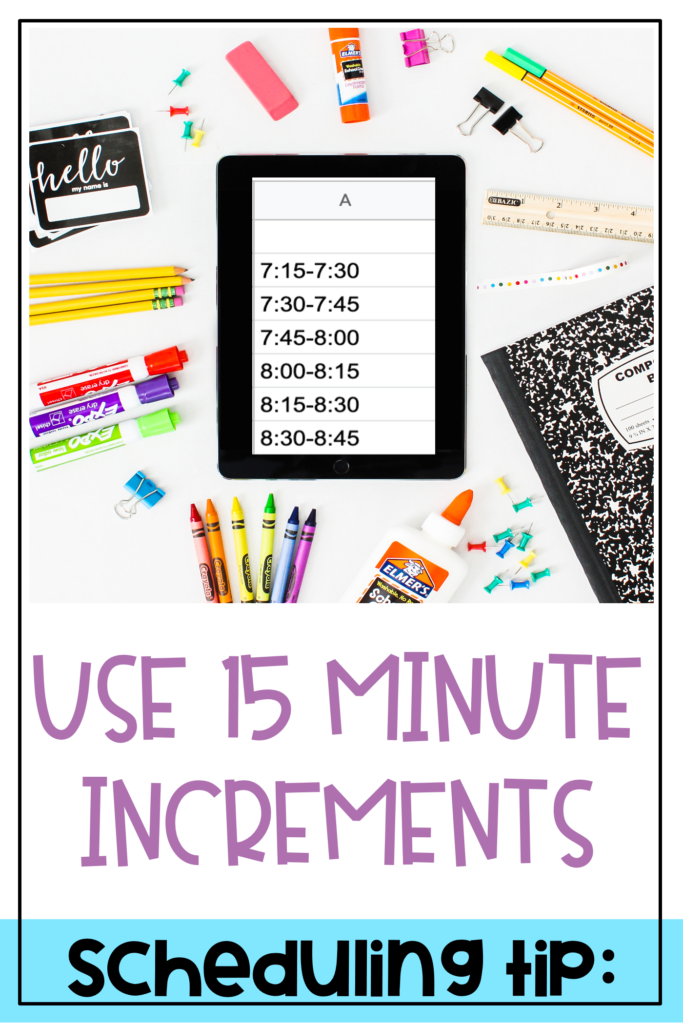
Plug In Your ‘Set In Stones’
Think about lunch, recess, specials, arrival times, announcements, dismissal times, etc. These are things that you already know are set in stone. This is the easy part! Plugging in what you know will help you find gaps so that can group the rest of your schedule!
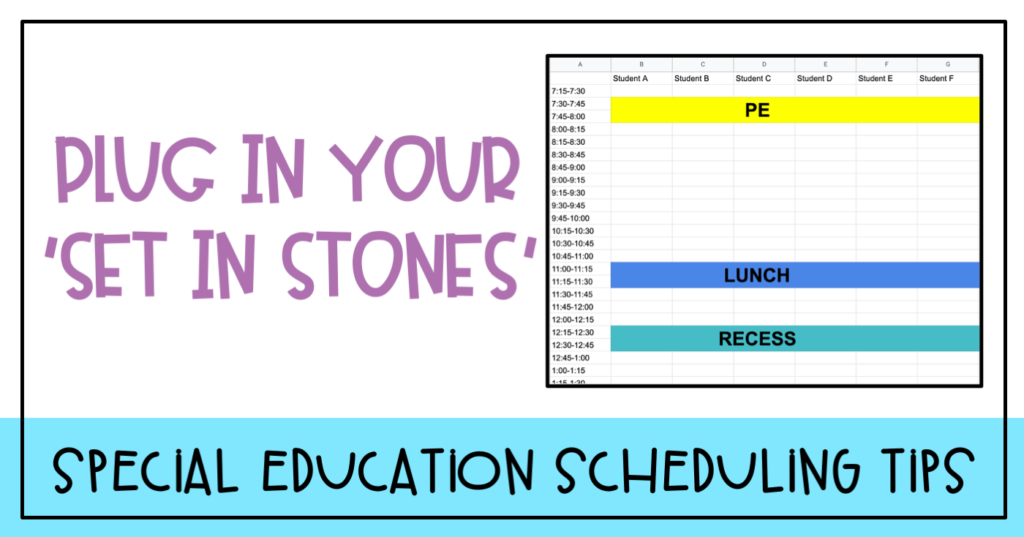
Time Blocks With More Students
Here is a question that I get asked alot, “how can I teach math if only 2 kids are in my room at that time”? My answer to that is, don’t teach math at that time! You have to look at those gaps of time where you know your kids aren’t going to be pulled for speech, or attending inclusion, or gone for specials and make those your small group teaching times. That is when you are going to get your direct instruction time in. Personally, morning meeting is one of the most important parts of my day. If we weren’t all together first thing in the morning, I would totally choose a different time of the day to still make it happen. Be willing to work around the gaps within your day.
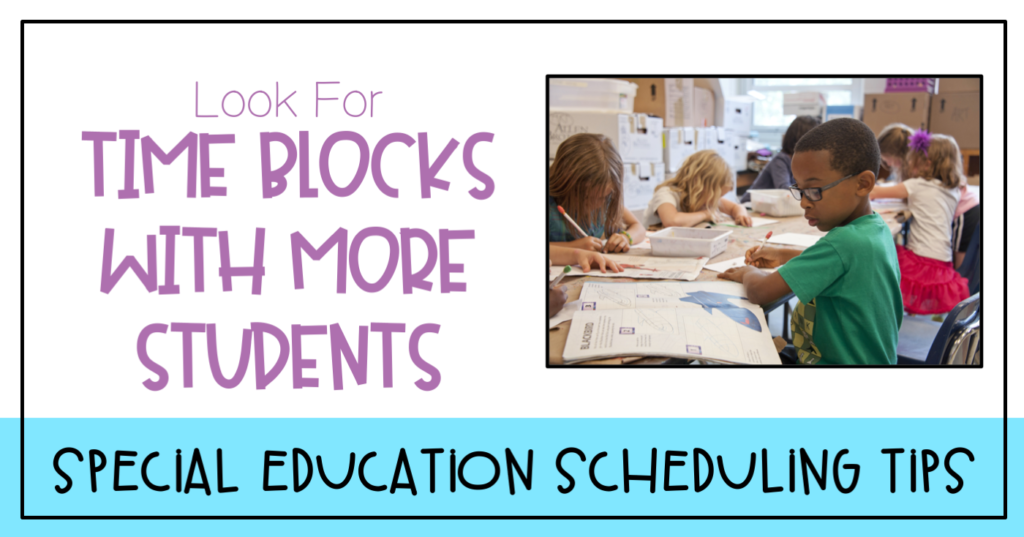
Time Blocks With Less Students
You have to think wisely here! Take advantage of those times when your classroom might have less students in the room. These are times you can specifically use for data collection, teaching those students who require higher levels of support (1:1), or scheduling a para’s lunch during this time.
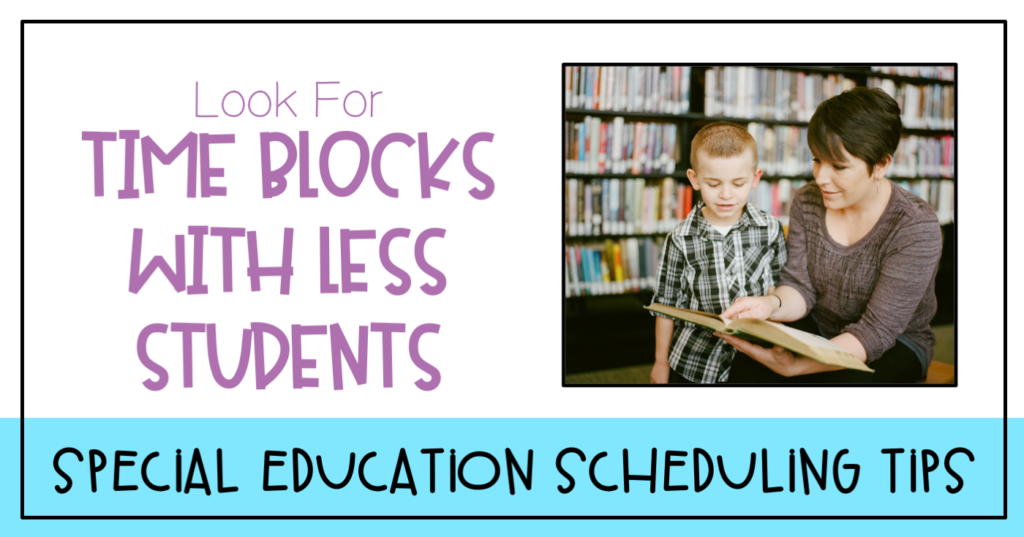
Weave In Independent Work
If I could tell first year teacher Sofie one thing, it would be this. Make sure there are times in that schedule where you are building independence. It doesn’t have to be anything long or ambitious. Start small. Like a 30 minute time block where you have students following a system where they are working on task boxes or file folders. Pick something that is appropriate to complete independently according to their skill level. Independent work is a key skill, but it’s a skill that needs to be taught. It’s on us to help our students get there!
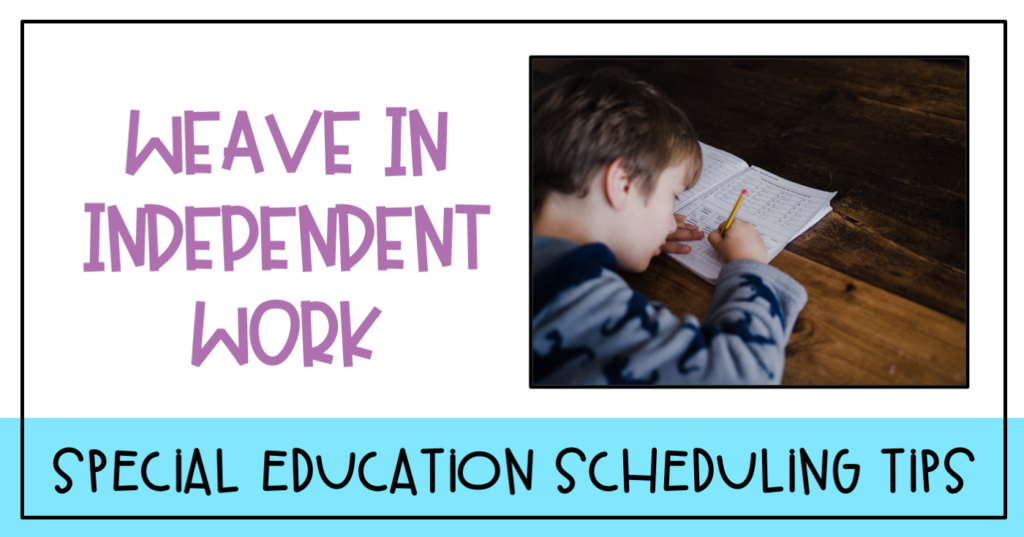
Advocate For Your Own Planning/Conference Time
I cannot stress this enough. It’s probably the most important part of your special education schedule. This is something I failed terribly at my first two years of teaching. I seriously thought the world might end if I didn’t go with my kids to PE. I never wanted to leave them and that is a serious problem. Because I wasn’t guarding my own time, I was sometimes staying at school until 8pm. Don’t be like me. Time for yourself may seem to fit NOWHERE on the schedule, but do not settle for this. You are legally allotted your own planning period. If you can’t figure it out how it works in the schedule, ask your team, admin, or coordinators for help. I am 100% a better teacher when I have my planning time and I know I am not the only one who will say this.
Why I Use Google Sheets When Creating A Classroom Schedule
- It’s easy to share your special education schedule with admin, inclusion, related services etc.
- I love that google sheets saves your changes as you go. This is imperative since sped teachers have to frequently edit and change schedules.
- You can easily fill colors for color coding, merge, and add links to your schedule.
- Easily print your schedule when needed! I like to print hard copies and place them by the door, my desk, and our independent schedules wall.
- You can quickly make a digital copy of your special education schedule to access for next year.
Creating schedules can be a headache. I hope these tips were at least a little bit helpful in getting you started on the right track! Be sure to check out my other blog posts if you need more tips and tricks in your special education classroom! Here is my most recent post on sensory input!








